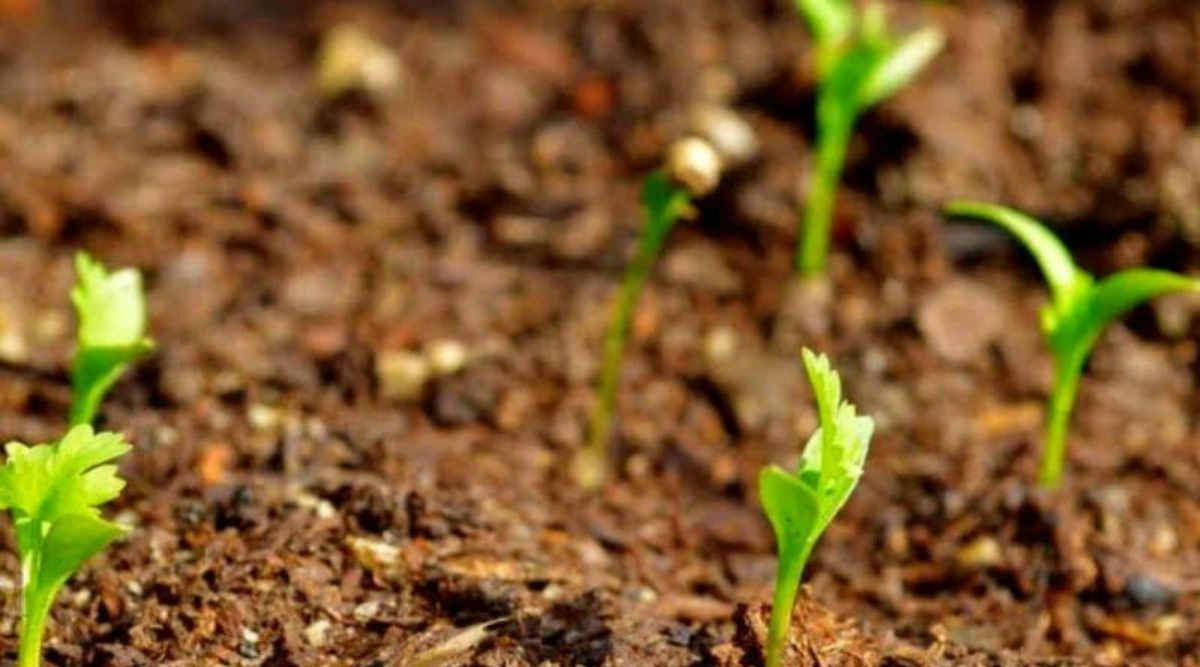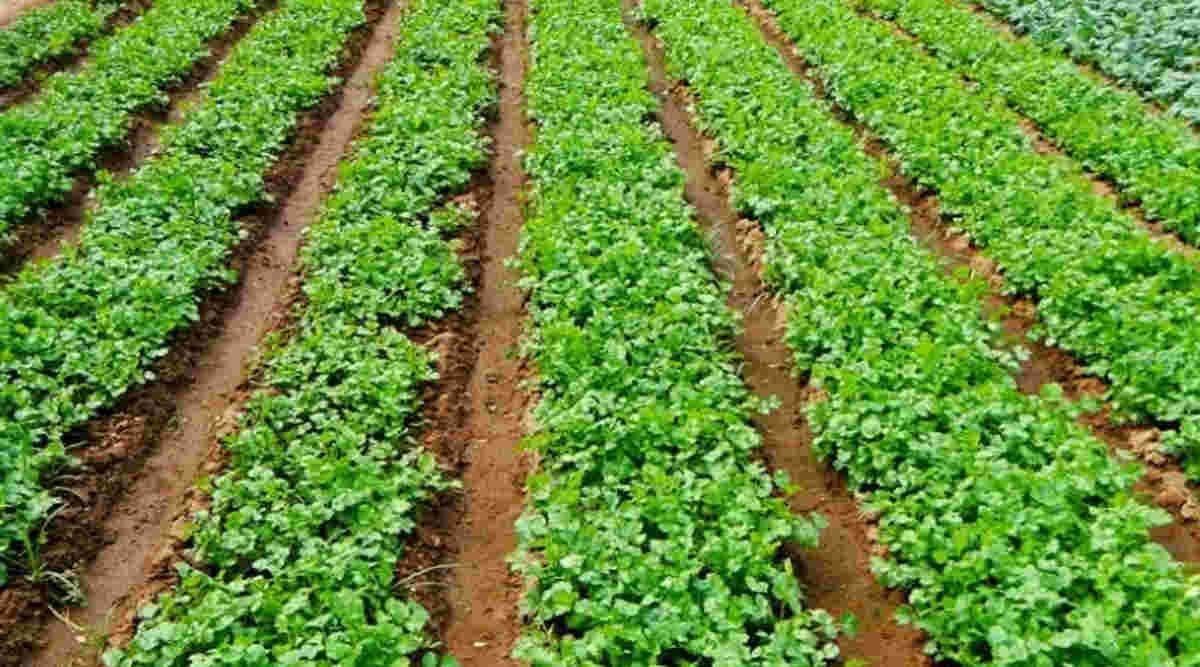Coriander Cultivation: How to earn good Profit from Low cost Cash Crop
Coriander is sometimes also grown as a hobby in the kitchen garden beds of the cities apart from the villages.
In terms of cash crops, coriander is a product that is consumed daily in every household. Coriander leaves are an integral part of vegetables, while coriander seeds are a spice used in most dishes. Whether it is a leaf or a spice, aromatic and volatile oil is found in coriander, which adds to the flavor of the food. That is why green coriander is in demand in the market every season.
The more coriander seeds are used as spices, the more there is a demand for ground coriander or coriander powder. Useful elements like fiber, calcium, copper, iron, vitamin A, vitamin C, vitamin K, and carotene are found in coriander. Diabetic patients are benefited by chewing two to four of its seeds daily.
Coriander Cultivation in Horticulture
Coriander is grown all over the country. More than a dozen varieties of coriander are cultivated in the country. Preparing for the coriander crop takes two and a half to three months. But farmers start earning income from selling their green leaves after about a month of its sowing.
However, it is natural for different varieties of coriander to have different yields and benefits. Due to easy growth and flourishing characteristics, coriander is often grown in the beds of kitchen gardens in addition to the villages. Due to its pleasant fragrance, city people are happy to grow coriander as a hobby, even in their home pots.
Climate for Coriander Cultivation
The temperate climate is more suitable for coriander cultivation. Any type of land with acidic properties is suitable for this. It likes mild winter and bright sunny weather. It suffers from frost on freezing days. In the hot summer, a good yield of coriander can be found in light shade places.
Cost and Profit of Coriander Cultivation
The cultivation of coriander is cheap. Its per hectare cost is about 15 thousand rupees, and after taking out the cost, farmers earn 50 to 60 thousand rupees per hectare. Coriander-producing farmers should choose such a variety which gives good production of both leaves and seeds.
The crop of varieties rich in both seeds and leaves is prepared in a relatively longer time. Initially its leaves are cut and sold and later the seeds. By the way, there are such varieties of coriander which are either more leafy or in whose seeds more fraction of aromatic oil is found.
Best varieties of Coriander
- Better seeded – RCR 435, Simpo S 33 and RCR 684.
- Broad leaves – RCR 728, ACR 1 and Gujarat Coriander – 2.
- Excellent in both leaf-seed – JD-1, Pant Haritima, RCR 446 and Pusa Chayan- 360.

Also Read: Beekeeping: Helpful in increasing Income and Production of Crops
Field Preparation
Before sowing of coriander, the field should be plowed and lightly irrigated so that the soil becomes bouncy and moisture remains in it. Use of cow dung manure during plowing also gives good yield. Its cultivation gives good profit even in summer for the yield of coriander leaves used in vegetables. While the farmers who get coriander for spices should sow it in the second fortnight of October 15 for its cultivation.
If there is more moisture in the field, 15 to 20 kg of seed should be applied per hectare. But if the moisture is less then the seed quantity should be 25 to 30 kg. Before sowing, the seeds must be treated to protect the crop from diseases. Before sowing such seeds, it should be broken into two parts by rubbing it lightly.
Sowing in rows with a special plow also proves beneficial. The distance between the rows should be about one foot and the distance between one seed to another is better up to 4-5 inches. The seeds should be sown about two inches below the surface of the soil. Most of the seeds do not germinate when sown too deeply. This causes loss to the farmer. Fertilizer should be used according to the requirement of the soil in coriander cultivation.
Crop Irrigation
Irrigation should be done as soon as sowing is done in the field with less moisture, whereas in the field with more moisture, irrigation should be done only when it is felt necessary. Normally about 5 irrigations are required during the entire coriander crop. The yield of coriander is damaged by weeds, because its plant itself is of small size. That’s why special care should be taken towards weeding and disease control to get good yield.

Diseases of Coriander
Chepa – The insects of Chepa are green and yellow in colour. They suck the juice of coriander leaves and dry them. Chepa disease spreads with mild heat. Sprinkling cow urine mixed with neem oil makes it a home remedy.
Uktha, clove and bhabhutia – all these three are fungal diseases. The infested plants dry up and die within a few days. In the case of cloves, the stem of coriander becomes swollen, knots start forming in it and its seeds also get deformed. White spots appear on coriander leaves due to bhabhutia attack. Soon the leaves turn yellow and fall off. As soon as the symptoms of these diseases appear, appropriate insecticide should be used after consulting the specialist.
Harvesting and Cleaning
If harvesting is to be done for green leaves, coriander is harvested as soon as the leaves grow. This harvesting can happen many times. Whereas for seed harvesting, the leaves of the plant are yellow and the color of the dodi on the plant is green to bright brown. If there is too much delay in harvesting, then the color of the seed starts getting spoiled and the price of the produce is low.
After harvesting, the coriander seeds should be sent to the market only after drying them in the sun and cleaning their stalks etc., otherwise, they will not get a good price.
Also Read: How to earn profit from low cost cash crop of Coriander Farming?
Contact us – If farmers want to share any valuable information or experiences related to farming, they can connect with us via phone or whatsapp at 9599273766 or you can write to us at “[email protected]”. Through Kisan of India, we will convey your message to the people, because we believe that if the farmers are advanced then the country is happy.
You can connect with Kisan of India on Facebook, Twitter, and Whatsapp and Subscribe to our YouTube channel.



